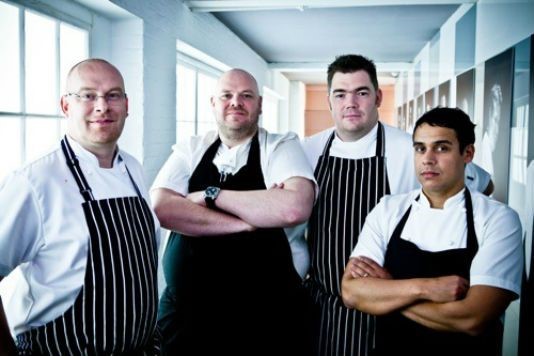The UK's favourite foods: South-West England

It's the final part of our journey around the UK and we're down in the far corner of England. Take a look at our favourite signature foods and vote for yours.
Our foodie journey around the UK ends down in the far corner of the islands in the south-west of England.
Here's a quick reminder of what we’re doing. Each week we nominate five foods from a different part of the UK, which coincide with the regions featured in the BBC2 series The Great British Menu. We think these foods are either quintessentially linked to the area through history, or they are more modern staples that began in that region, with many subsequently spreading in popularity throughout the rest of the isles.
We then invite you to vote for your favourite of our choices – and disagree vehemently with what we've come up with in the Comments section. Voting will remain open for each region until 29 May. Then the top choice from each region will go forward into a national vote to decide the UK’s favourite food.
Here are this week’s choices.
Bath Chaps
Bath Chaps are made from the lower half of a pig's cheeks and the jowl. It’s then either cured or brined, boiled, flattened, rolled, and chilled. To serve, you can either cut a thick wedge and flash fry to crisp a little, or slice it very thin on a bacon slicer and treat it the same way as you would ham.
Why pigs' cheeks are the new pork belly
Cheddar cheese
Cheddar may have hailed from a small village in Somerset, but it went on to conquer the world. A proper traditional cheddar is no middle-of-the-road choice, but a glorious journey through the taste and flavour of the west of England. West Country Farmhouse Cheddar has PDO status, and so can only be made in Cornwall, Dorset, Devon or Somerset by a group of producers using primarily milk from their own herd and traditional production techniques.
Cornish clotted cream
The Phoenicians are said to have introduced the process of making clotted cream to the south west, which was very generous of them. But it didn’t really take off as an export until the 20th century.
Cornish clotted cream has Protected Designation of Origin (PDO) status, thanks, in part to the Rodda family, who for five generations have been making cream in Scorrier, near Redruth. And, yes, if you’re a traditionalist you should put the cream on top of the jam.
Cornish pasty
The Cornish Pasty Association, consisting of 50 or so of the county's bakers, define a genuine Cornish pasty thus: a distinctive 'D' shape, with the crimped edge around the curved side. The filling should be chunky, and contain mince or roughly chopped beef (skirt being traditional), diced swede or turnip, diced potato, onion, salt and plenty of pepper.
The food has now achieved Protected Geographical Indicator (PGI) status, which means that only pasties made in Cornwall to a traditional recipe can be sold as a Cornish pasty.
World Pasty Championship winners
Wiltshire cure bacon
A famous export, Wiltshire bacon is renowned for the method and taste of its cure, which involves a brine. The meat is then dried for up to two weeks to allow the cure to penetrate the meat. This also means the
amount of salt used to cure the meat is reduced and gives a much more intense, meatier flavour.
There's still time to vote for your favourites from the other parts of the UK.
The UK's favourite foods: Scotland
The UK's favourite foods: Central England
The UK's favourite foods: North East England
The UK's favourite foods: Northern Ireland
Comments
Do you want to comment on this article? You need to be signed in for this feature